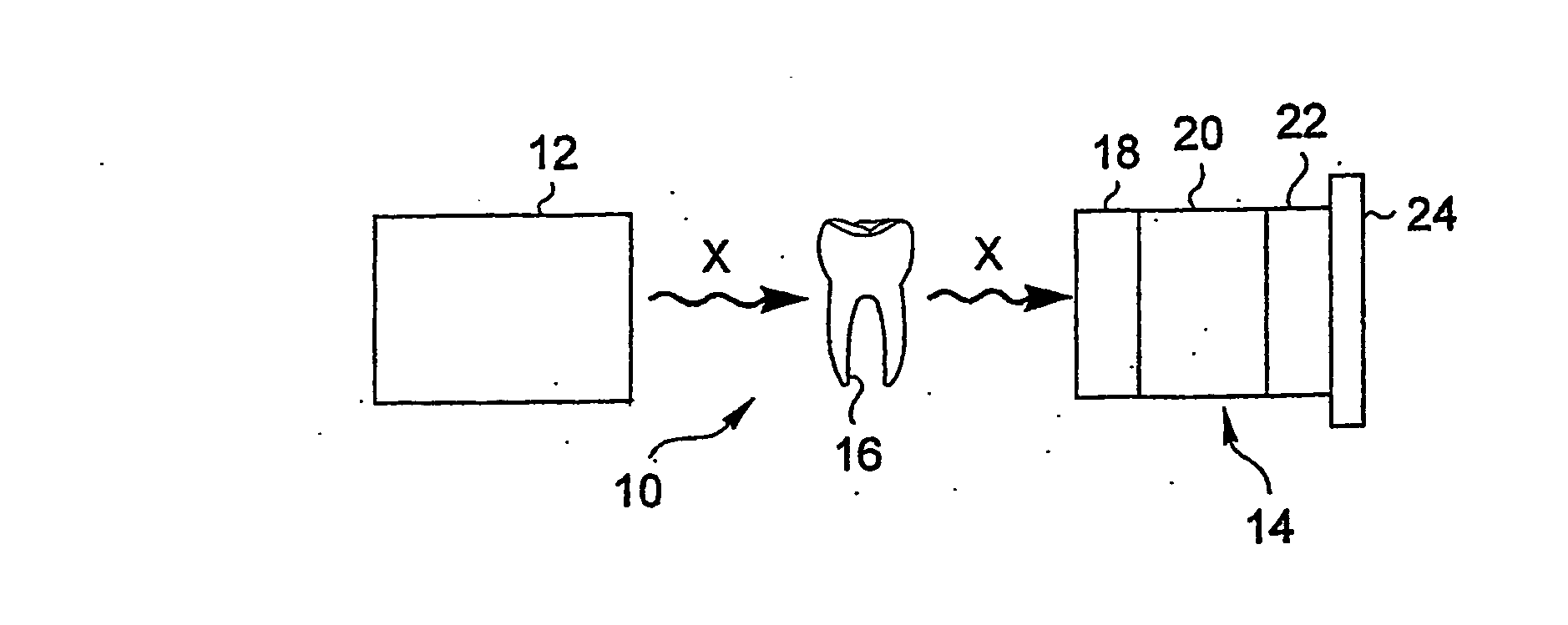Dental Radiology Apparatus and Signal Processing Method Used Therewith
a radiology apparatus and signal processing technology, applied in the field of dental radiology, can solve the problems of deteriorating signal-to-noise ratio, hindering obtaining good signal-to-noise ratio, and cmos detectors obtaining a signal-to-noise ratio of inferior quality to that of ccd detectors, so as to reduce the risk of pollution of cmos signals during transmission, not deteriorating the detector's signal-to-noise ratio
- Summary
- Abstract
- Description
- Claims
- Application Information
AI Technical Summary
Benefits of technology
Problems solved by technology
Method used
Image
Examples
Embodiment Construction
[0218] As represented in FIG. 1a , an x-ray dental radiology apparatus 10 comprises an x-ray source 12 placed outside a patient's mouth and an intraoral radiation sensor 14 placed in a patient's mouth, behind a tooth 16, and which is capable of receiving the x-rays that have passed through the tooth.
[0219] The sensor 14 comprises, in the propagation order of the radiation, a scintillator 18 that converts the x-rays that have passed through the tooth into visible light, a fiber optic plate 20 that, on the one hand, includes metal particles intended to absorb the part of the x-rays received by the scintillator and not converted into visible light and, on the other hand, conducts the visible light thus converted to a detector 22. This detector is mounted on a ceramic substrate 24 and converts the visible light from the glass fibers into one or more analog electrical signals.
[0220] The various components of the sensor 14 are assembled together, for example, by gluing.
[0221] The scint...
PUM
 Login to View More
Login to View More Abstract
Description
Claims
Application Information
 Login to View More
Login to View More - Generate Ideas
- Intellectual Property
- Life Sciences
- Materials
- Tech Scout
- Unparalleled Data Quality
- Higher Quality Content
- 60% Fewer Hallucinations
Browse by: Latest US Patents, China's latest patents, Technical Efficacy Thesaurus, Application Domain, Technology Topic, Popular Technical Reports.
© 2025 PatSnap. All rights reserved.Legal|Privacy policy|Modern Slavery Act Transparency Statement|Sitemap|About US| Contact US: help@patsnap.com



